You probably already heard that the Grand Canyon Track in the Blue Mountains is one of the most beautiful walks near Sydney. It is certainly the most iconic walk in the Blue Mountains. But what is so special about the Grand Canyon Track in the Blue Mountains?
Well, mostly, it is all about the primeval lost world on the floor of the canyon. Imagine walking through narrow chasms dominated by ancient ferns, crossing a gurgling creek peppered with moss-covered rocks past towering canyon walls and ever-present waterfalls. Everything about this striking scenery feels ancient, and you half expect a dinosaur to pop its head above the fern trees.
Grand Canyon Track at a Glance
Distance: 6.3 kilometres loop
Ascent: 350 meters
Decent: 350 meters
Grade: Moderate – steep ascent and descent, multiple creek crossings
Time to complete: 2.5 – 4hrs (2.5 – 4hrs (depending on your pace and the number of photo stops)
Tip: Keep in mind that Blackheath is about 10 degrees cooler than Sydney in winter and the Grand Canyon is cooler still. So, if you are planning the walk in the colder months, pack enough layers to stay warm.
How to get to Grand Canyon Track, Blue Mountains
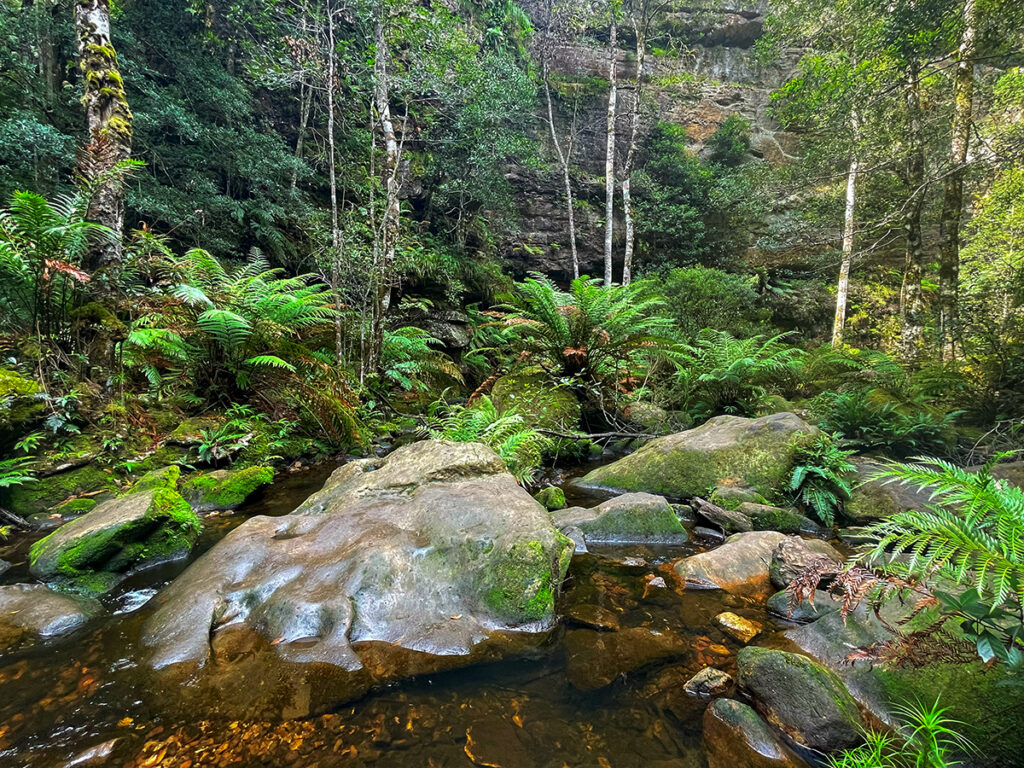
Grand Canyon track starts either at Evans Lookout or at Neats Glenn carpark. The walking track is a circuit, but it doesn’t start and end at exactly the same point. You can walk this track either in a clockwise direction, starting at Evans Lookout and finishing at Neats Glen, or in an anti-clockwise direction, starting at Neats Glen car park and finishing at Evans Lookout.
Choosing the best way to walk the Grand Canyon trail will depend on the kind of ascent you prefer. The Evans Lookout end is much steeper than the Neats Glenn end. So, if you prefer a hard and fast climb, start the walk at Neats Glenn. If you’d rather take a longer but less steep climb, opt to start at Evans Lookout.
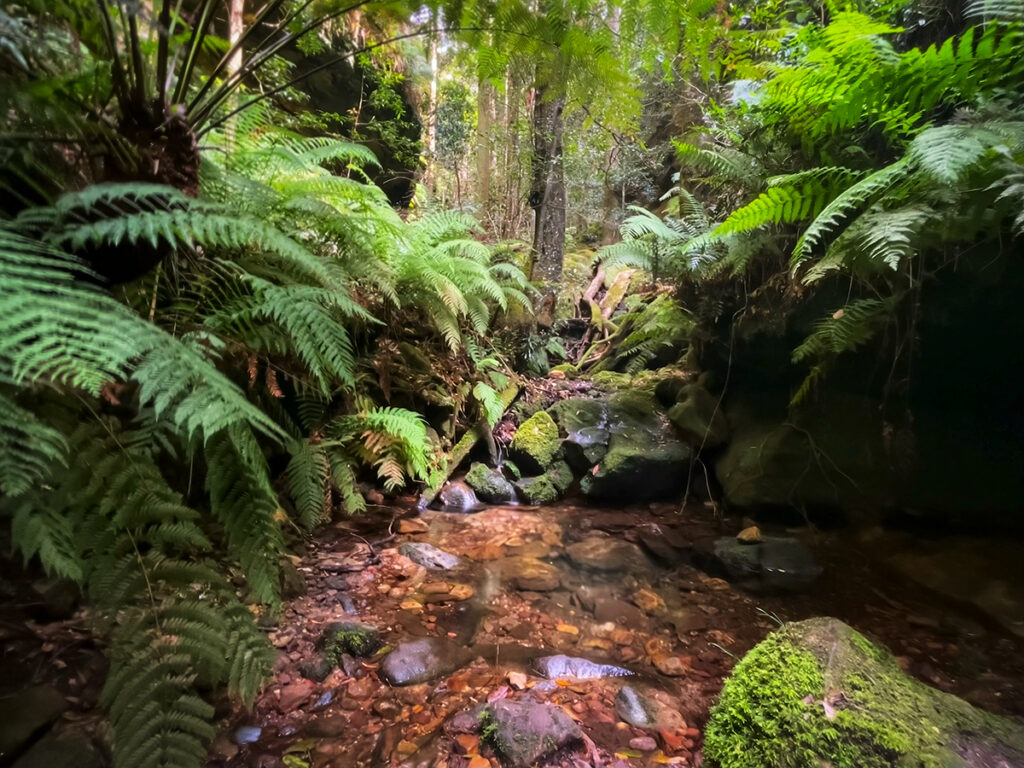
There are three car parks along Evans Lookout road in this order: Neates Glen, Grand Canyon and Evans Lookout. It is a 1.4 km walk between Neates Glen and Evans Lookout carpark. The Grand Canyon carpark is located between the other two, so if you park there, you’ll have a short walk to the start of the track and another short walk to your car from the end of the track.
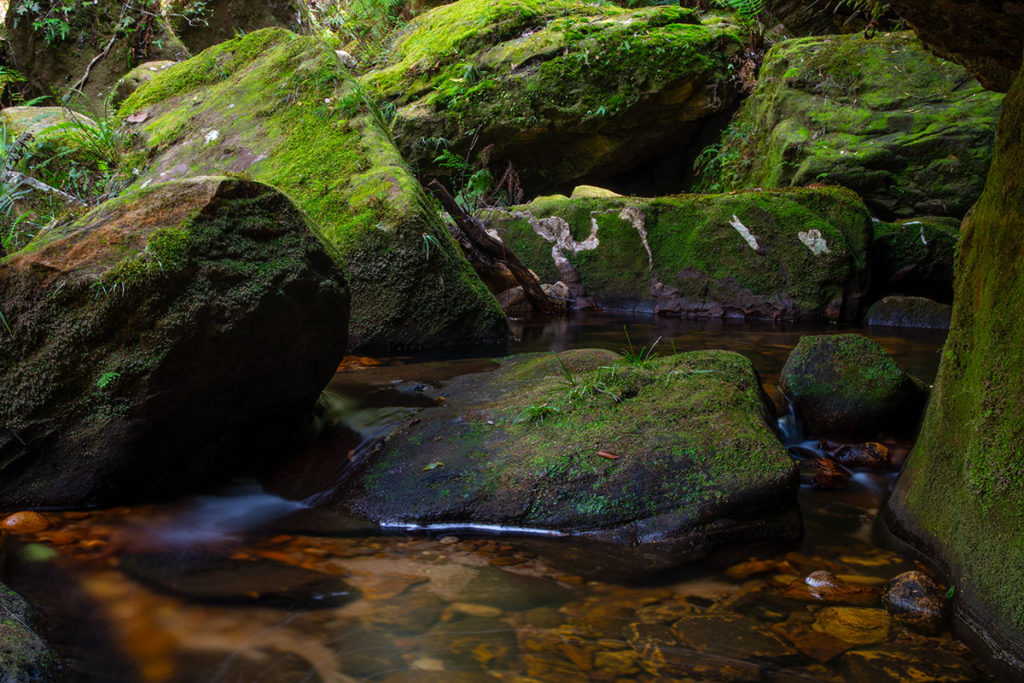
Public Transport: You can also reach the Grand Canyon track by public transport. Catch a train from Central to Katoomba and then bus 698 from Katoomba Street (the main street in Katoomba). The bus takes you to St Andrews Avenue, 1.5 km from Neates Glen car park (a 20-minute walk).
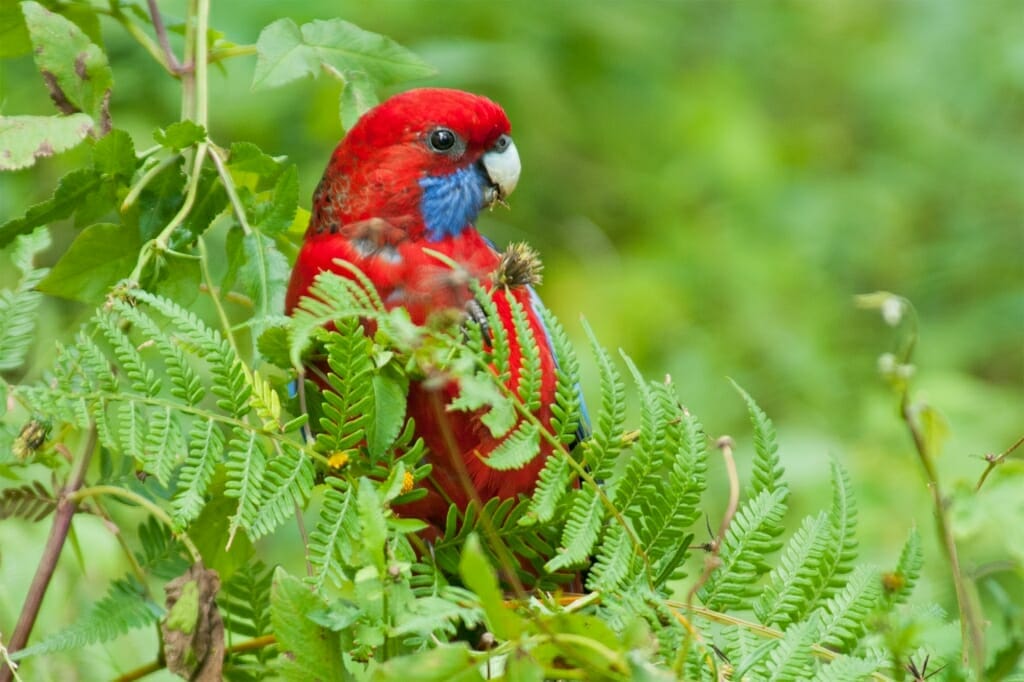
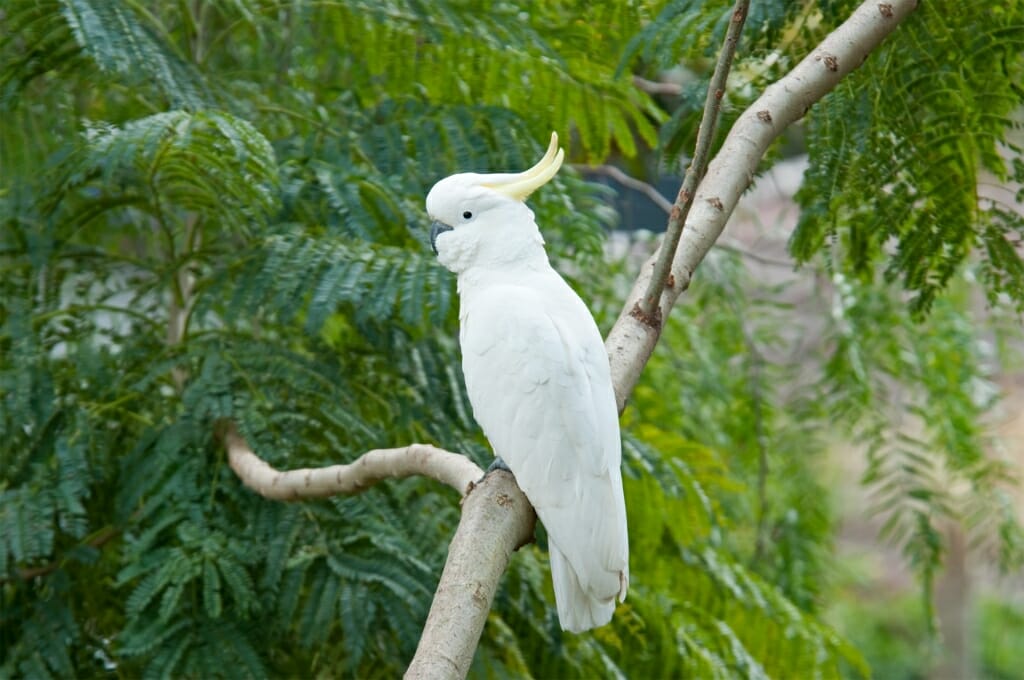
As you walk around the car parks, keep an eye out for some parrots. This is the only place I’ve seen Gang Gang cockatoos near Sydney. There are also the superbly bright Crimson rosellas, King parrots, the cheeky Sulphur-crested cockatoos and occasionally the Yellow-tailed black cockatoos.
Starting Grand Canyon Track at Evans Lookout
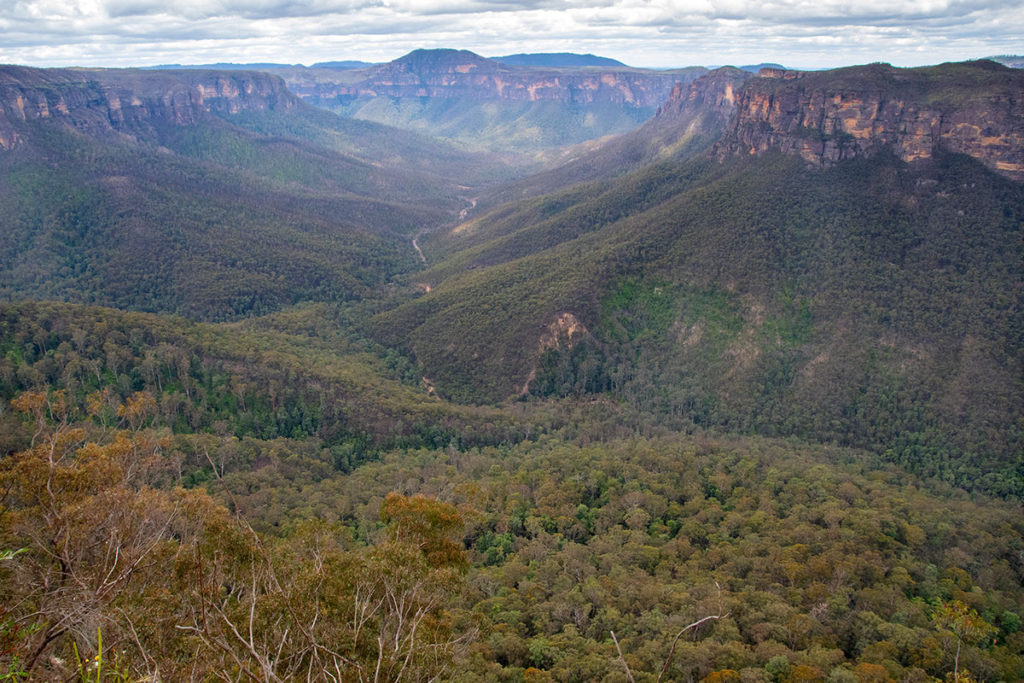
Even after seeing a fair share of lookouts in the Blue Mountains, I find Evans Lookout breathtaking. Of course, to be fair, the majority of the most popular Blue Mountains lookouts in Katoomba, Leura and Wentworth Falls offer views of Jamison Valley, while in Blackheath, you are looking out (and walking into) Grose Valley. And since it’s a different valley, it obviously looks different, which makes it more interesting. It is also quite a wide lookout that lets you see the valley from slightly different angles.
Descending into the Grand Canyon
Once you are ready to start the walk, follow the sign to the Grand Canyon track and begin the steep descent along a series of sandstone steps.
From the start, the trail runs through a dramatic pass in the rock and continues downhill via sets of wooden and stone steps. It passes through a gap in the cliffs and across wooden bridges, descending ever deeper into the canyon.
The first half of the descent takes you through tall eucalypt forest framed by the towering walls of the canyon. At night, these walls are covered by thousands of glowworms (more on visiting the canyon at night at the end of the post).
The deeper you descend into the canyon, the lusher the vegetation becomes. Primeval ferns and fern trees give you a taste of what’s to come when you reach the canyon floor.
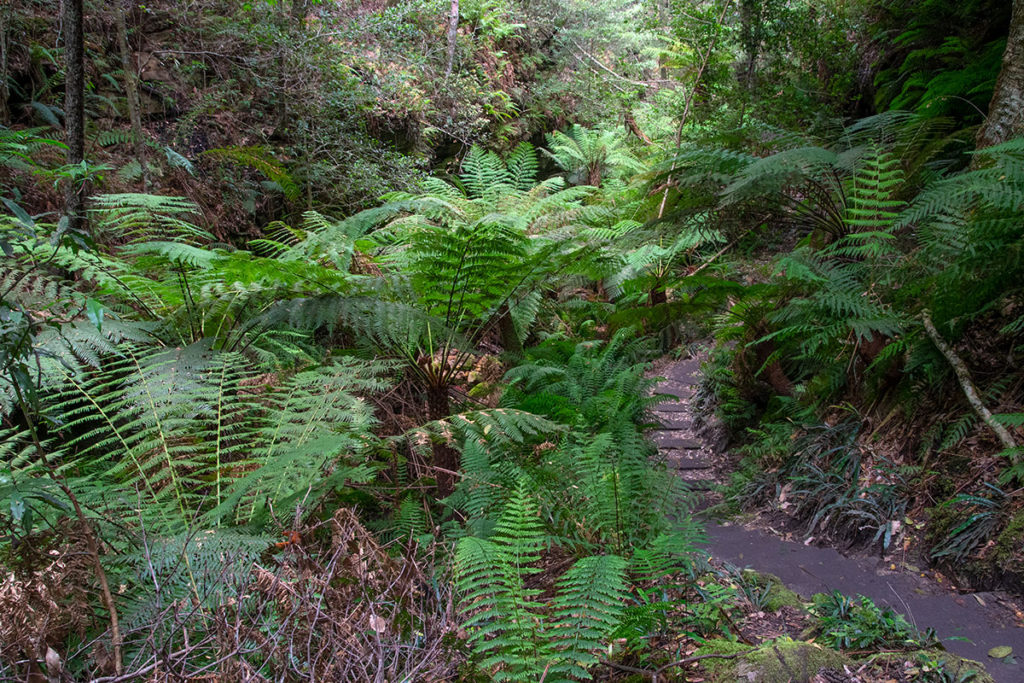
When you reach the point where the trail squeezes between two rock walls, you’ll feel the air getting cooler. You are entering the canyon now. By the time you reach the floor of the canyon, you will have descended more than 300 meters.
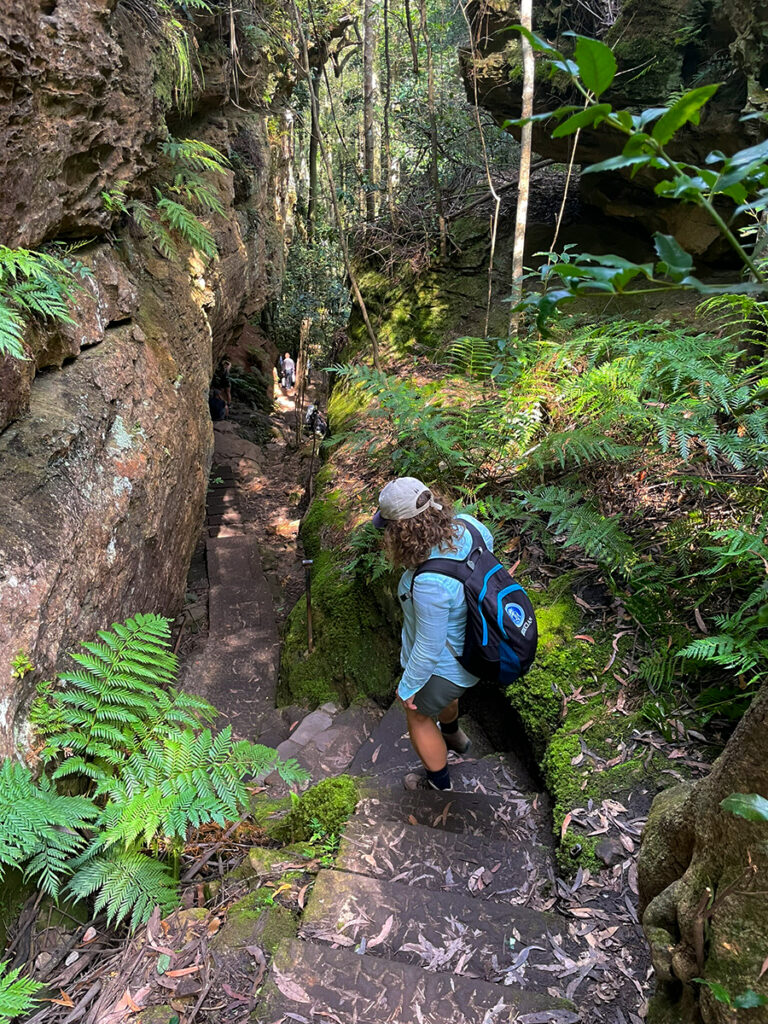
You reach the canyon floor quite suddenly. The trail narrows and dips alongside a cliff wall, and you sense a whiff of cold, humid air on approach. You begin to feel that you are entering an age-old realm that has been concealed by the canyon walls for eons.
The Canyon Floor
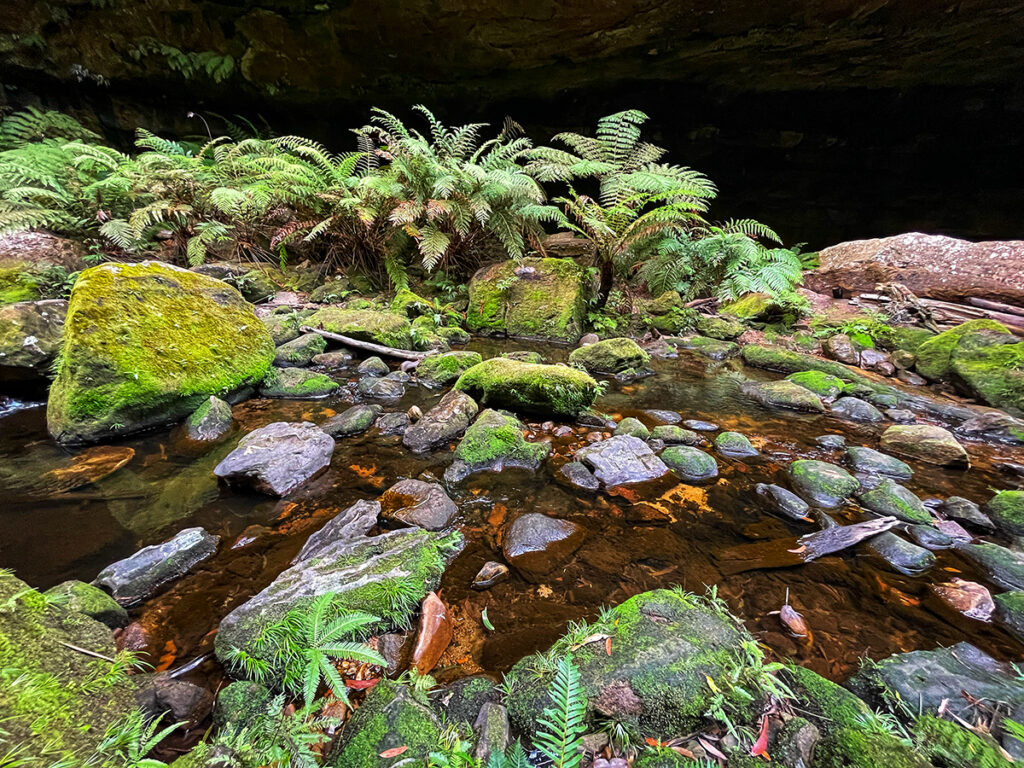
Soon, you find yourself in a narrowing chasm surrounded by ancient ferns, dim light, and trickling water. You have reached the canyon’s floor. The cliffs’ walls are so high here that you can barely see where they end.
From this low perspective, you get a keener sense of the mammoth scale of the landscape around you than you do from the clifftop lookout. I thought of the millions of years that it took nature to carve out this canyon, and my daily worries simply dissipated in the face of such vastness.
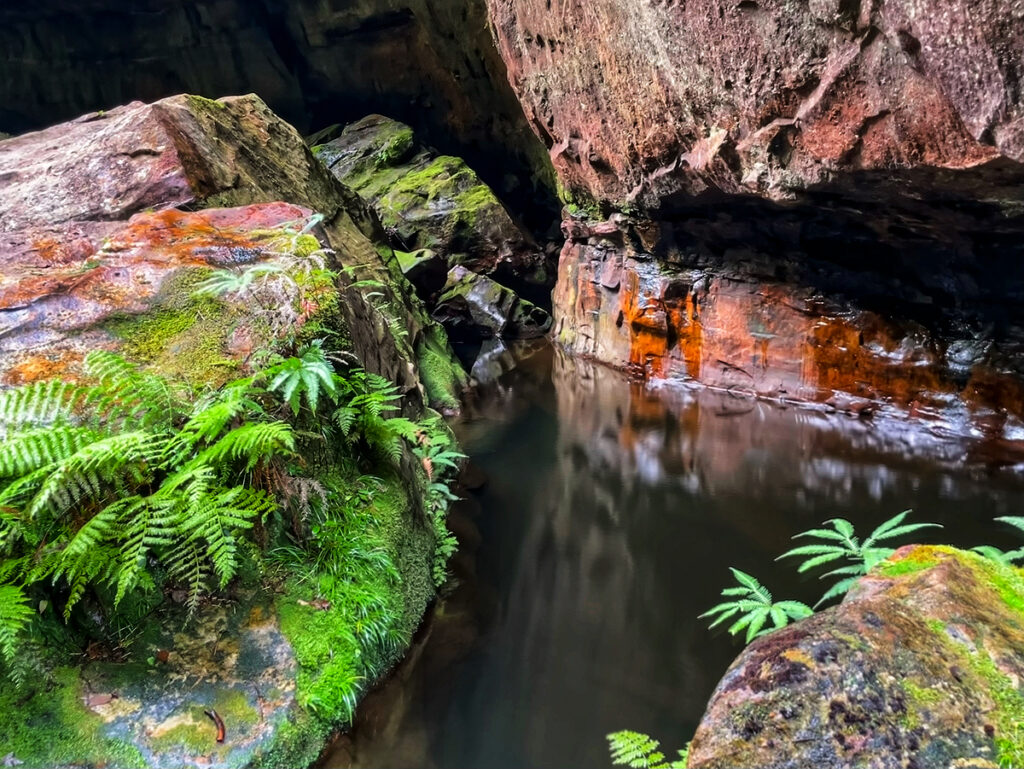
This is my favourite stretch of the Grand Canyon track. The trail winds alongside Greaves Creek, crossing it every so often over stepping stones and moss-covered boulders. This rainforest is the remnant of Gondwana vegetation that dominated Australia 100 million years ago.
About halfway along the canyon floor, you come across a waterfall rushing between some large boulders and chunks of rock. It may not be visible in the dryer months, but you’ll hear it. The pool at the bottom of the waterfall is home to some enormous bright red yabbies.
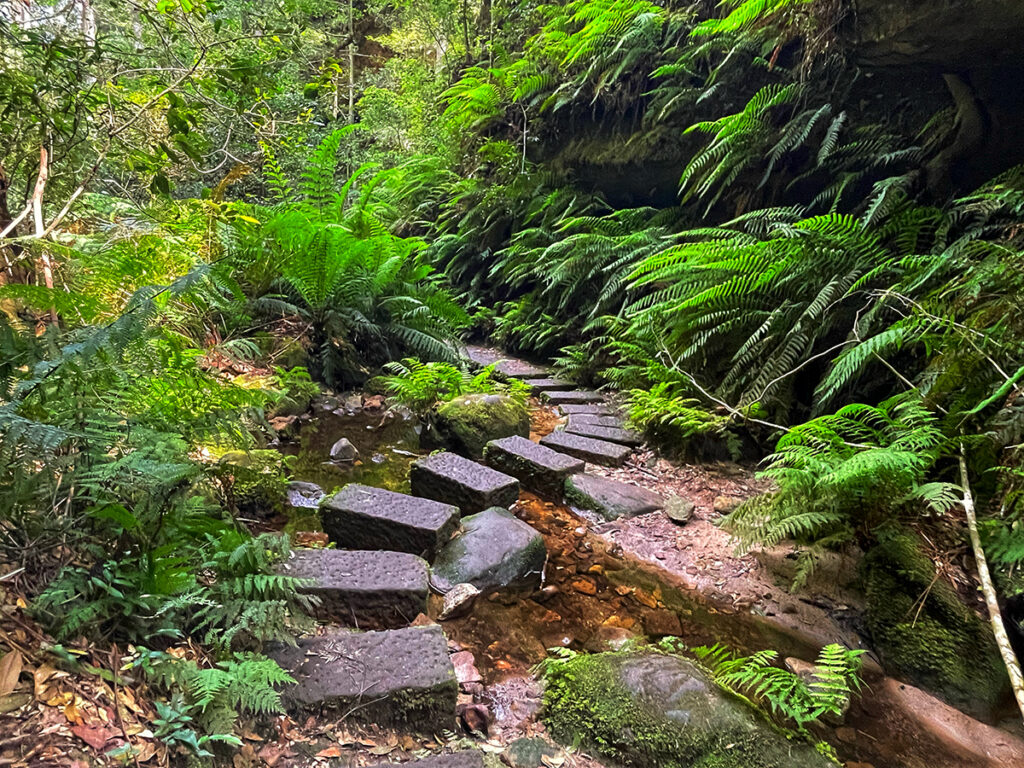
Here, the trail climbs up a few meters and brings you to another section of the canyon. This section has the wildest feel. Fallen tree trunks lie scattered throughout the creek bed or lean against the canyon walls. Waterfalls trickle down fern-covered rocks. Scattered boulders replace stepping stones in several places.
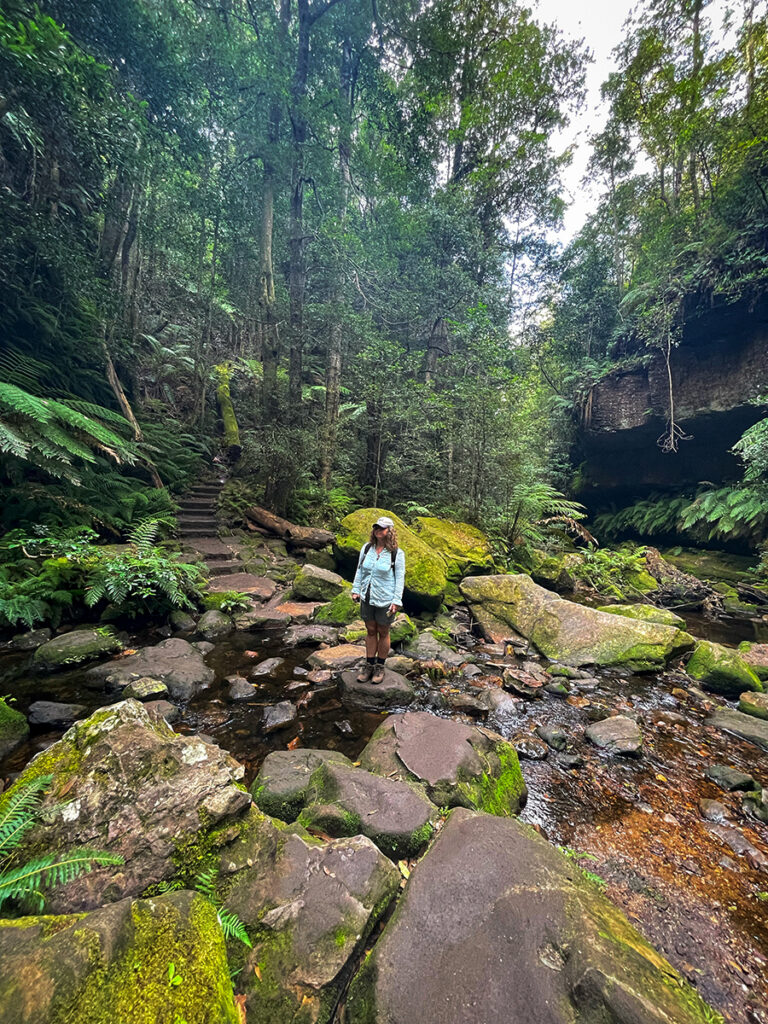
There are a few somewhat secluded swimming holes along this part of the canyon. The water is bitingly cold but very refreshing on a hot summer day.
Ledge Walk above Grand Canyon
Eventually, the trail starts to climb higher, and you leave the canyon floor behind. But you are not done with the creek yet, you are just going to be walking slightly above it.
The trail doesn’t climb very high, it levels out just above the canyon and continues following the creek along a rock ledge. You can see that the trail had been carved out of the rock wall – it’s so narrow that a railing had to be installed to prevent people from tumbling down into the canyon.
A lot of the time, you’ll be walking along the wall of the canyon under great rocky overhangs, including the well-known Rotunda – a particularly wide overhang.
Once you walk past the sign that says “only abseilers beyond this point”, the trail gets interesting again. You can see the creek below through the gaps in vegetation, and some of these views are incredibly picturesque. And if you are walking in the afternoon, you may see the walls of the canyon reflected in the creek.
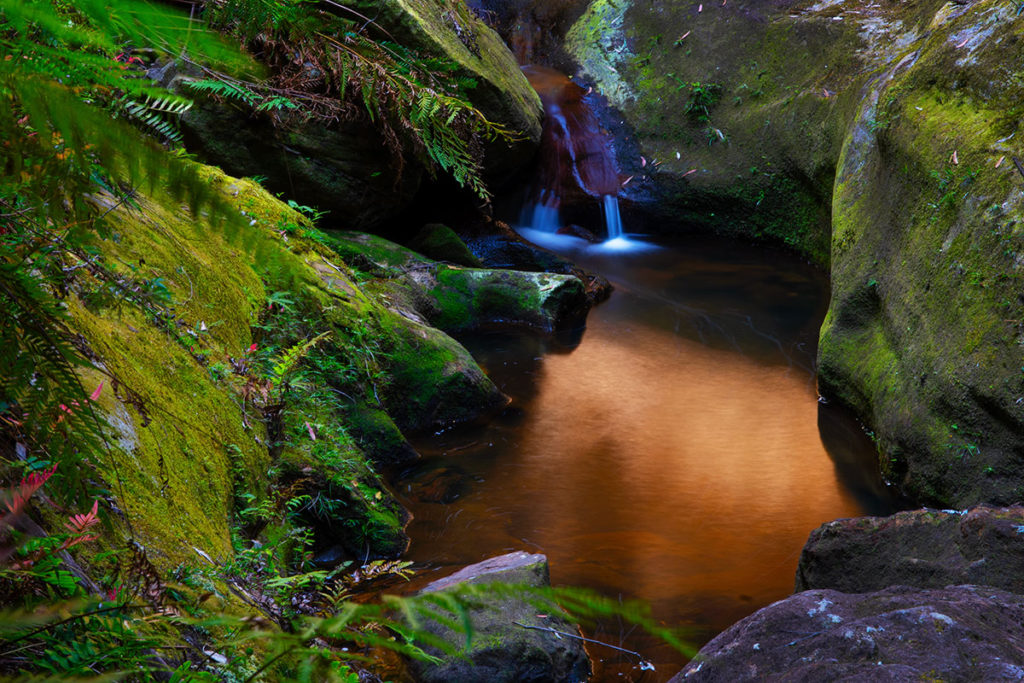
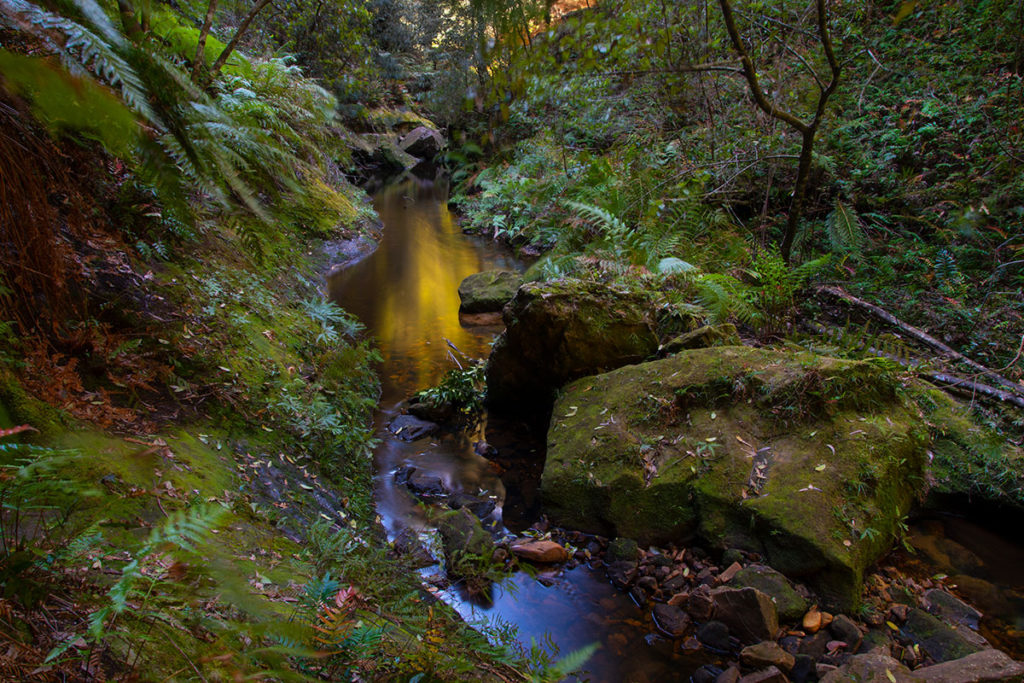
Towards the end of this section of the trail, you come to a lovely waterfall. There are some flat rocks in front of it where you can have a break from walking and enjoy the beautiful scenery around you.
The trail then runs behind the waterfall, so you’ll probably feel the spray on your face as you walk past it.
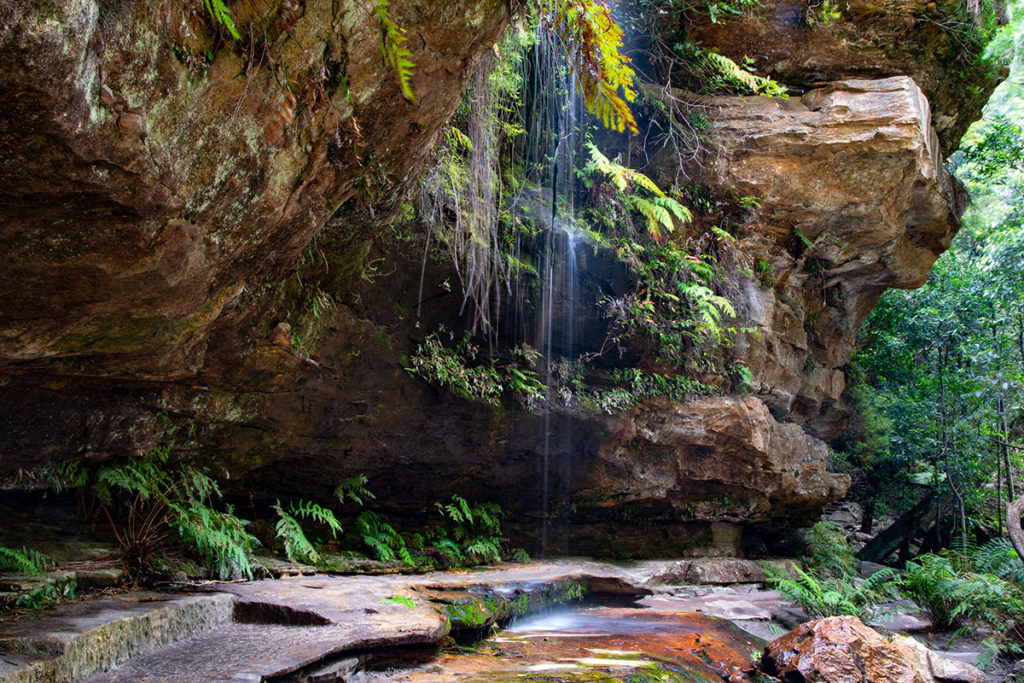
Shortly after the waterfall, you come to a pitch-black cave – the trail runs right into the darkness. The darkness, however, only lasts a couple of steps, and almost straight away, you see the light at the end of the tunnel. This tunnel was created by a rockfall at some time in the past, adding another element of adventure to an already adventurous walk.
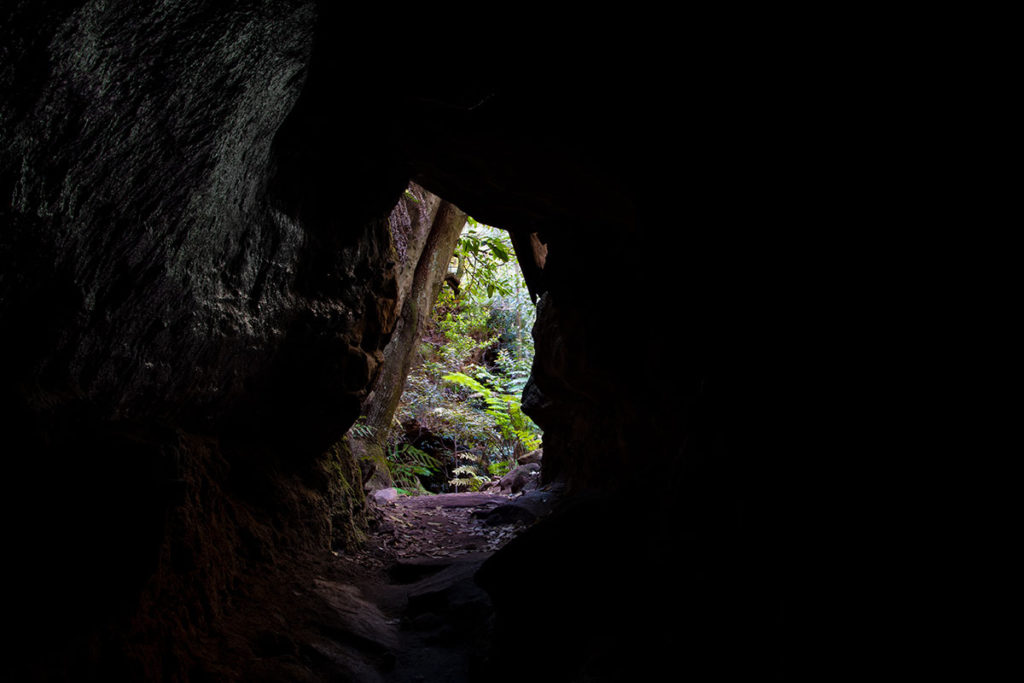
Climbing out to Neats Glen
Shortly after going through the tunnel, the trail turns sharply and starts to climb out of the canyon. If you brought lunch or a snack, now would be a good time to have it – you are going to need an energy boost.
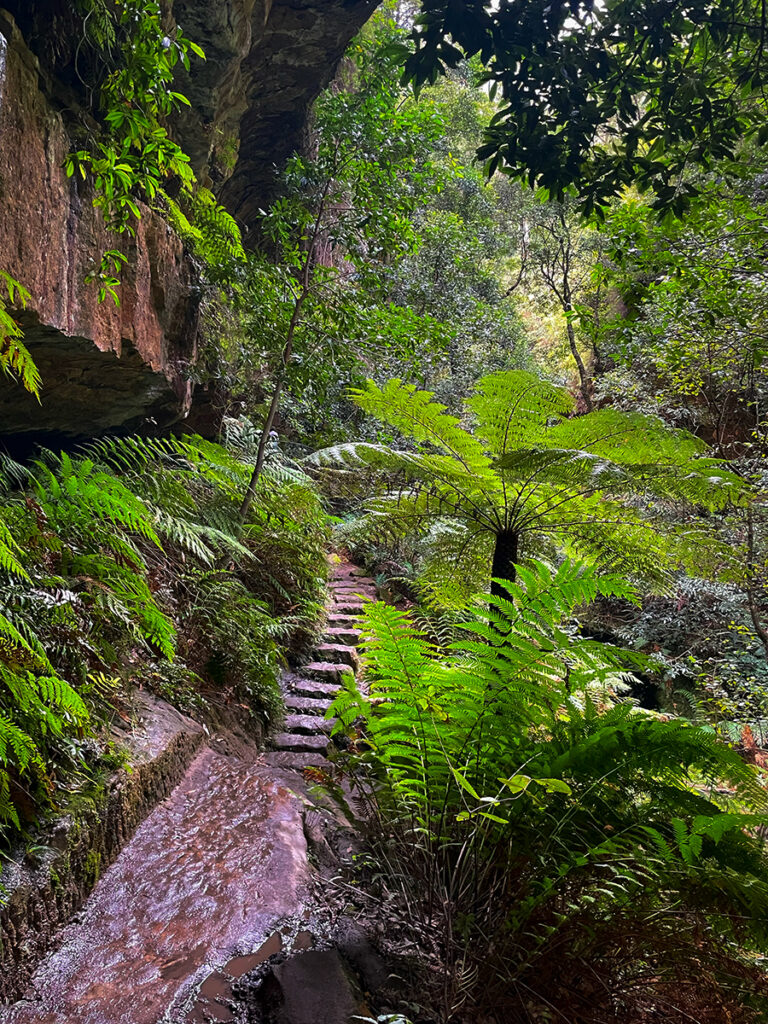
Follow the signs to Neates Glen and climb, climb, climb. Just as you think you have reached the top of the escarpment, you round the bend in the trail, and there are more steps.
The views of the monolithic sandstone walls provide a pleasant distraction from your burning legs and straining lungs, and eventually, you emerge at Neates Glen carpark. And immediately, you begin to regret that the trial ended. And promise yourself that you will be back.
Grand Canyon at Night
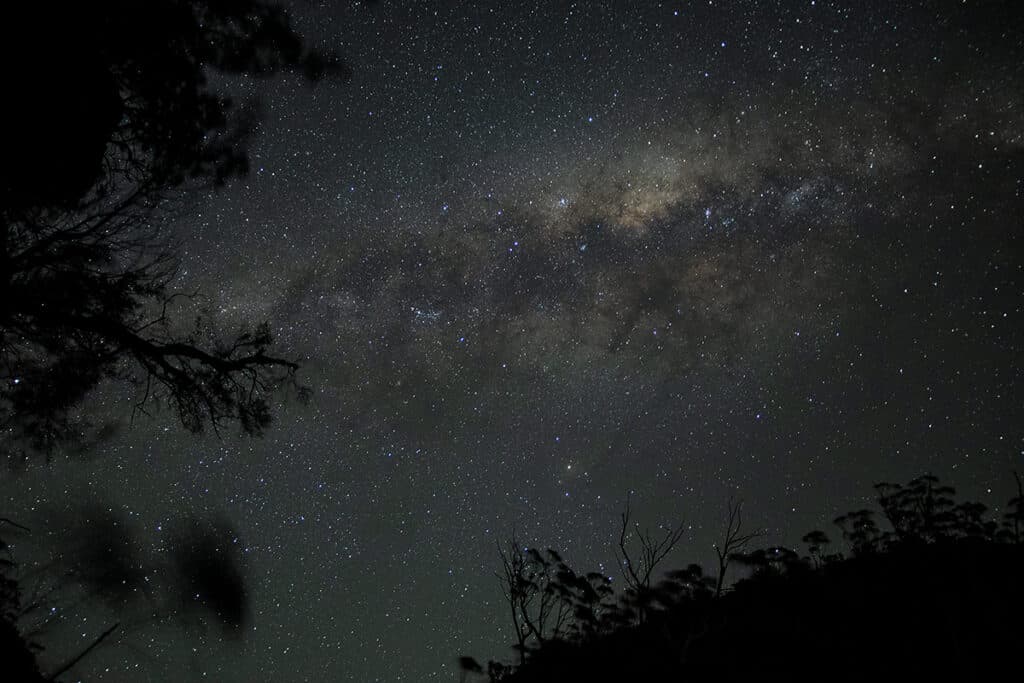
For a truly spectacular show, you have to visit the Grand Canyon at night. On a clear night, you will see the Milky Way arching above you, and the walls of the canyon are illuminated by thousands upon thousands of glow worms.
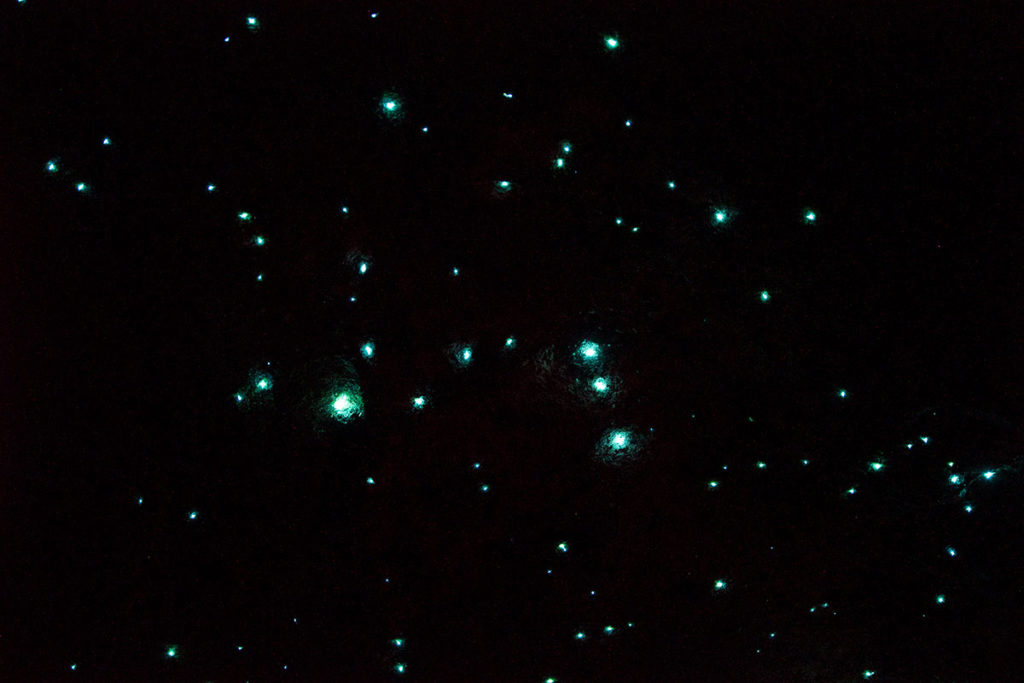
For this walk, you’ll need to start the trail at Evans Lookout. You start seeing glow worms as soon as you find yourself walking between the canyon walls, about 500-600 meters into the walk. Here the colonies are the most extensive.
To see the glow worms at a close range however, you’ll need to make your way down to the canyon floor. You can find more details in my guide to finding Fireflies and Glow worms in the Blue Mountains.
Once you are done, the quicker way up is to return to Evans Lookout. However, if you feel like completing the circuit and if it is a clear night, you’ll have a chance to see and photograph the night sky from the ledge walk on the way to Neates Glen.
Who Built the Grand Canyon Track?
The original Grand Canyon track first opened to the public in 1906. To put this in perspective, it was before the Communist Revolution in Russia, before the fall of the Ottoman Empire and certainly before the days when helicopters would deposit pre-processed sandstone blocks along the trail. This very steep trail was built with nothing more than shovels, crowbars, and dynamite.
At the time, most people thought that such a track couldn’t be built. We owe the pleasure of walking this magical trail to the vision and enthusiasm of Tomas Rodrigues who first came to Blackheath as the railway station master in 1889. Thanks to his efforts, this remarkable track and an even more challenging Rodriguez Pass were built despite all the engineering challenges.
Stay overnight in Blackheath
Why not make a weekend of it and stay overnight in Blackheath? There are some exceptional boutique lodges available in the area so you can rest in luxury and take another walk the following morning. The highly-rated Federation Gardens & Possums Hideaway is one of the most conveniently located lodges on Evans Lookout Road.
More Things to do in the Blue Mountains
- The Lost World of the Grand Canyon Track in the Blue Mountains
- Blue Mountains by Train: Walks, Views and Waterfalls
- Blue Mountains Jenolan Caves – how to explore the world’s oldest crystal caves
- The Giant Stairway and the Dardenelles Pass – An Epic Walk in the Blue Mountains
- Prince Henry Cliff Walk in the Blue Mountains – Epic Views and Waterfalls
- Echo Point to Scenic World walk in the Blue Mountains
- Best way to visit Wolgan Valley & Lithgow Glow Worm Tunnel
- South Lawson Waterfall Circuit Walk – One Walk, Five Waterfalls
- Finding Fireflies and Glow Worms in the Blue Mountains
- Glow worms and Waterfalls of Horseshoe Falls Walking Track in Hazelbrook

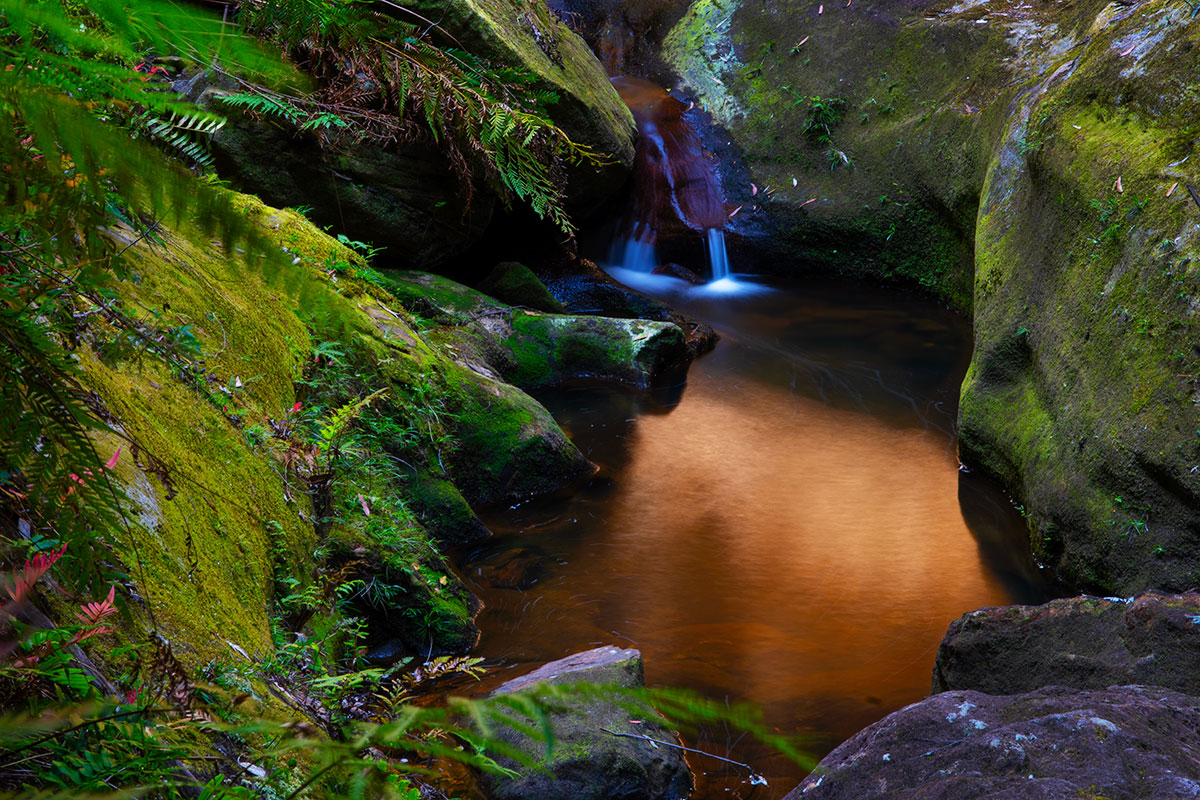
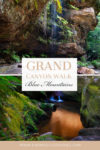
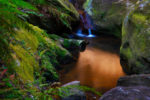
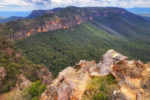
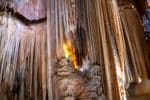
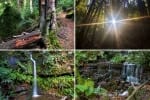
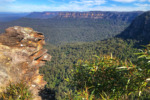
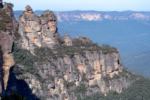
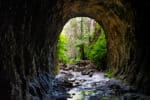
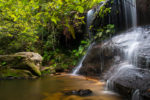

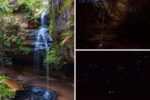
Some beautiful photos in your post. The Blue Mountains is a beautiful part of Australia and so much more than the 3 sisters.
The canyon looks fascinating, otherworldly!
That’s exactly what I thought!
Goodness this looks like it is straight from a movie! Would love to do this at some point!
What beautiful colors, and such an amazing area to walk through. It looks like a hidden jungle, so quiet and peaceful. I’ve been to the Blue Mountains before but definitely didn’t spend enough time there to discover this gem. I guess I’ll just have to go back!
There is so much to the Blue Mountains! You could spend months exploring them and still find new hidden gems every time you go.